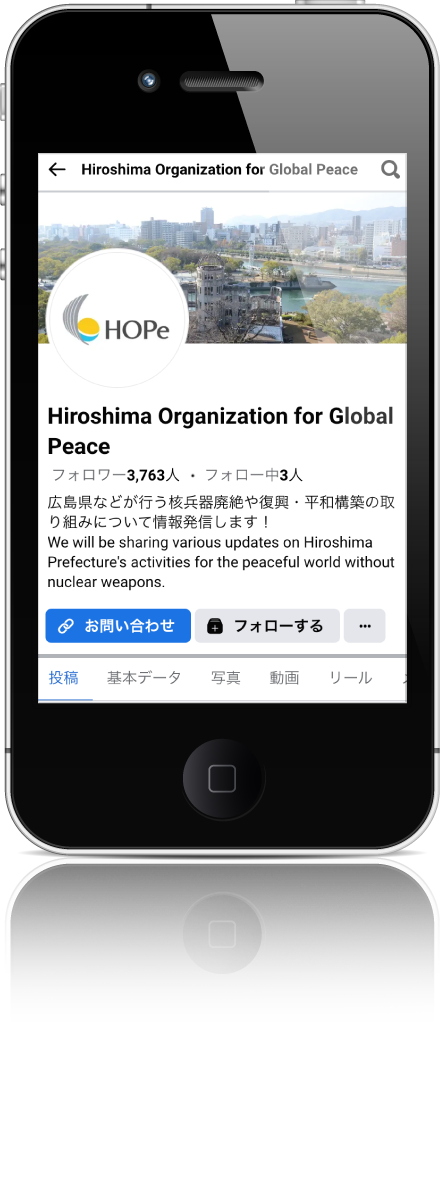Research Results and
Recommendations for Download
November 14 (Thu.) Day 2
○ Day 2 program
・Interaction with A-bomb survivors
・Visit, lecture, and tour of Radiation Effects Research Foundation (RERF)
・Tour around Hijiyama (army cemetery, etc.)
・ Lecture “About ICAN” by Tim Wright, ICAN Tre
The second day of the Hiroshima-ICAN Academy began with a session in which participants heard from hibakusha about their experiences of the atomic bombing. Four A-bomb survivors—Koko Kondo, Yoshiko Kajimoto, Toshiharu Goto, and Chiyo Miyazaki, whose father was exposed to the atomic bomb—told participants about the reality of their A-bomb experiences.
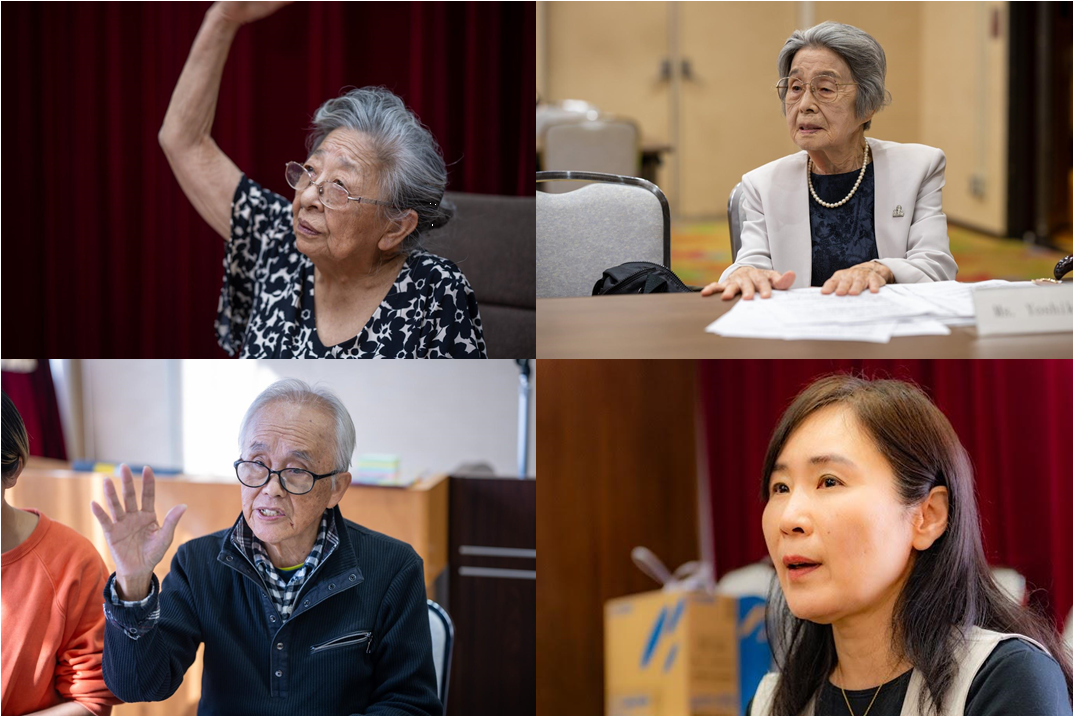
A question was asked by a participant: “As a hibakusha (a survivor of either of the atomic explosions at Hiroshima or Nagasaki in 1945), what responsibility do you think the U.S., which dropped the atomic bombs, needs to bear?” In response, a hibakusha said, “Rather than holding the U.S., which dropped the bombs, responsible, it is important that the country that carried out the bombing and the country that was bombed both take action so that the tragedy is not repeated.” The participants seemed impressed by this positive statement that although they had suffered from the atomic bombings, they are working together to realize peace without holding the perpetrator country responsible.
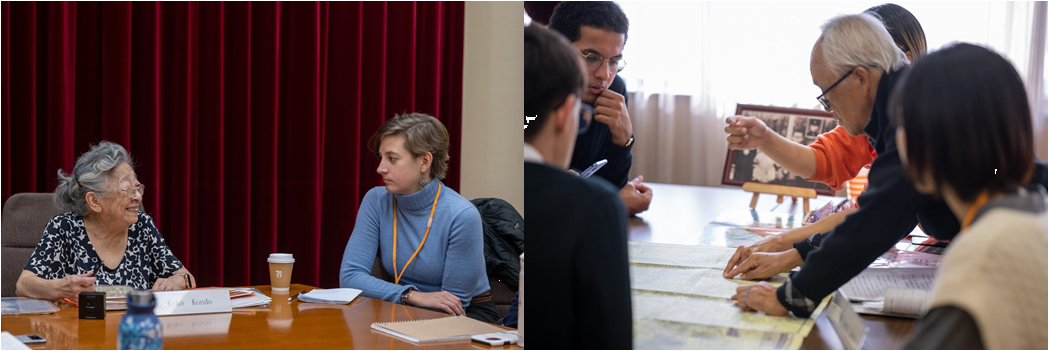
After lunch with A-bomb survivors, the participants visited the Radiation Effects Research Foundation (RERF) in the afternoon for a research overview lecture by Mr. Noriaki Yoshida, a researcher in the Clinical Research Department. Subsequently, Mr. Jeffrey Hart of the Public Relations and Publication Office guided the participants on a tour of the facility.
During the research overview lecture, the participants were briefed on the forefront of research into the effects of radiation on the human body and were given an overview of the medical mechanisms and approaches. Since some of the participants had medical backgrounds, they asked quite technical questions, which were answered sincerely by the lecturer, Mr. Yoshida.
During the tour of the facility, Mr. Hart also guided the participants through the history of the Foundation, including its past history of conducting research that was not always in accordance with the wishes of the A-bomb survivors. Although policies have changed and such research methods are no longer used, the participants were shocked to learn that there was such a dark past behind the atomic bombing.
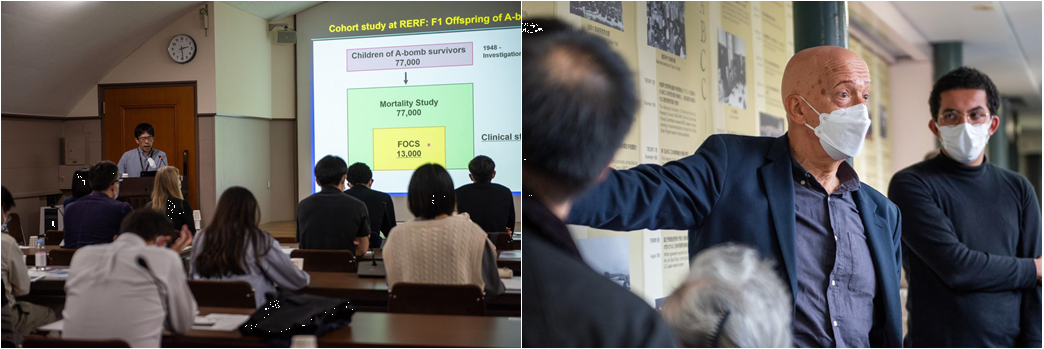
Subsequently, the participants toured the army cemetery.
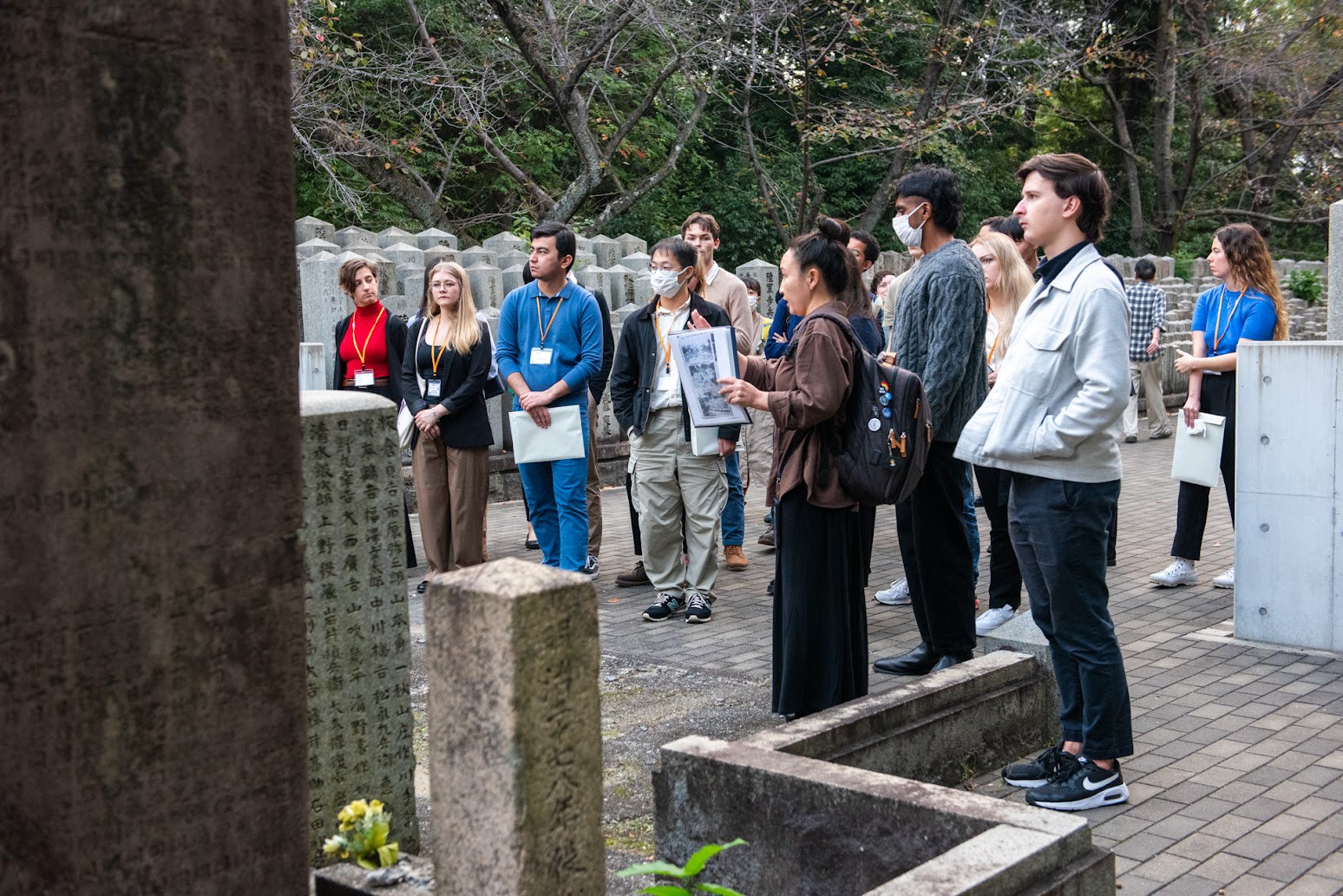
The army cemetery enshrines the former army war dead from the Meiji period, and although it was heavily damaged by the atomic bombing, it has been restored to its present state with the cooperation of many people. There are also graves of Chinese, German, and French soldiers in one corner of the army cemetery.
After the atomic bombing, the injured from the hypocenter area began pouring into Hijiyama, where the cemetery is located, and the entire mountain was turned into a living hell. A temporary relief station was set up, but sadly, many of those who died were cremated by the soldiers.
The cemetery offers a panoramic view of the reconstructed city of Hiroshima, and some participants were shocked by the contrast between the sad past and the reconstructed city of Hiroshima.
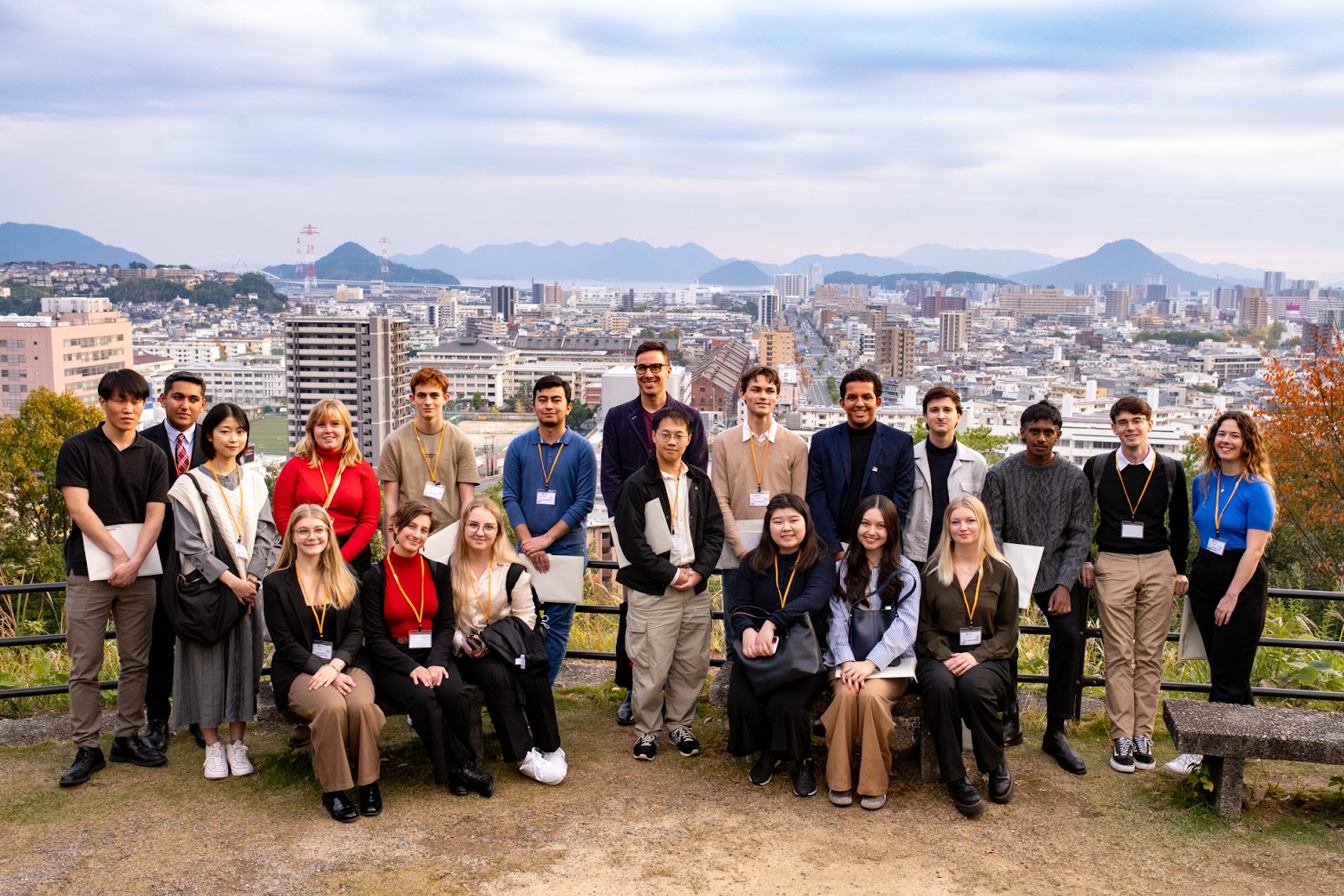
In the evening, Mr. Tim Wright, ICAN Treaty Coordinator, gave a presentation titled “About ICAN” on the origins and history of ICAN, its current efforts, and what it hopes to do in the future. In particular, it was a valuable opportunity for participants to hear specific stories about ICAN’s contribution to the adoption and entry into force of the Treaty on the Prohibition of Nuclear Weapons.
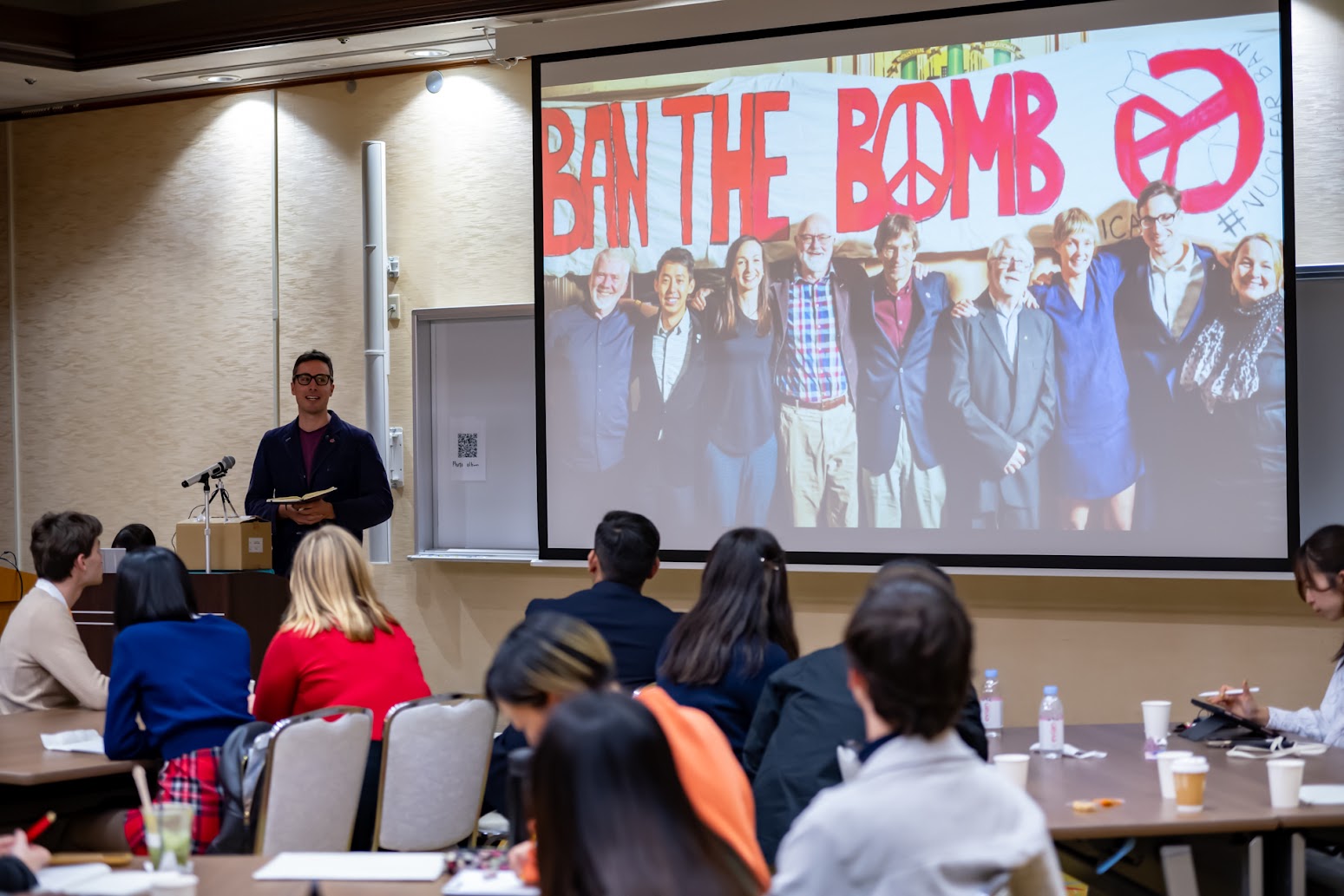
Subsequently, the participants exchanged views with youth activists who are working in Hiroshima to realize a peaceful world without nuclear weapons and had a lively discussion about their respective activities and how they should help achieve nuclear abolition in the future.
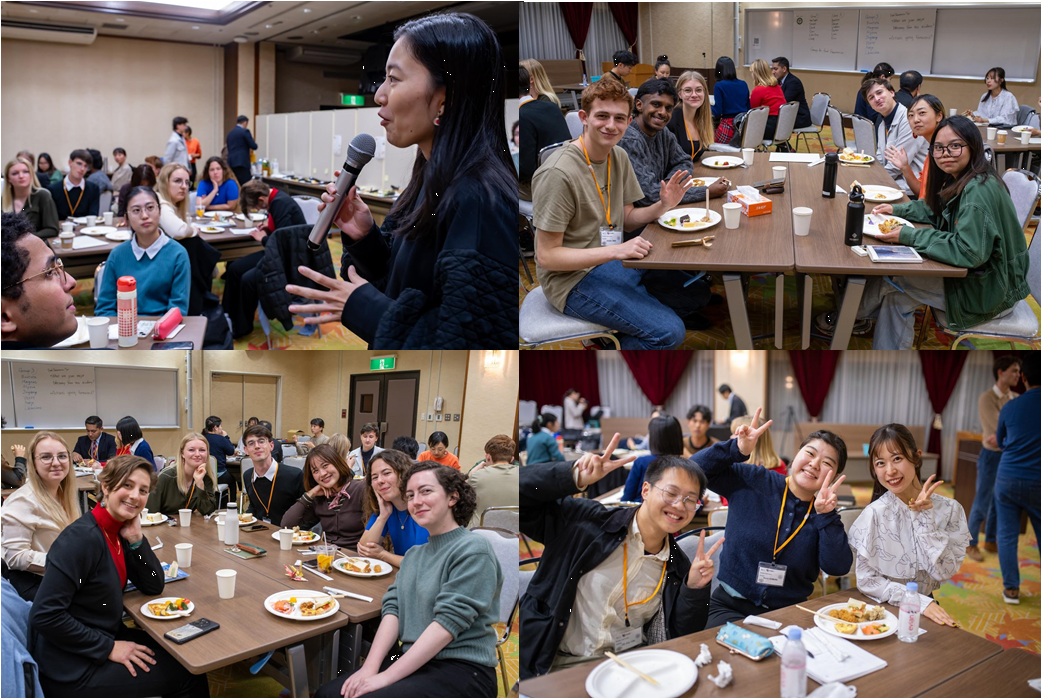
The second day of the Hiroshima-ICAN Academy has come to a close and we are now half way through.
In the past, participants had learned in their own countries that an atomic bomb was dropped on Hiroshima.
However, by actually seeing, hearing, and witnessing the reality of the atomic bombing, the resolution of the “atomic bombing” in each participant’s mind seemed to have increased.
There are two days left. Participants will continue their studies in Hiroshima!

